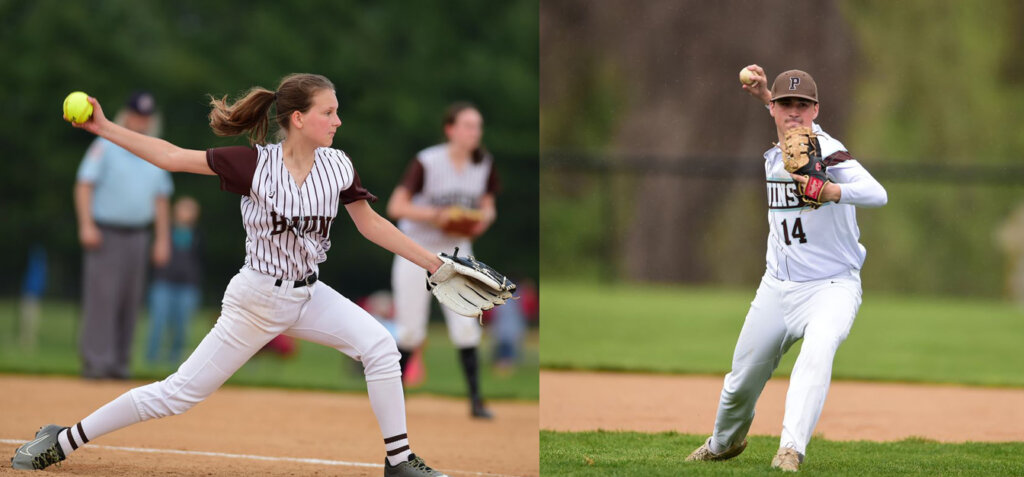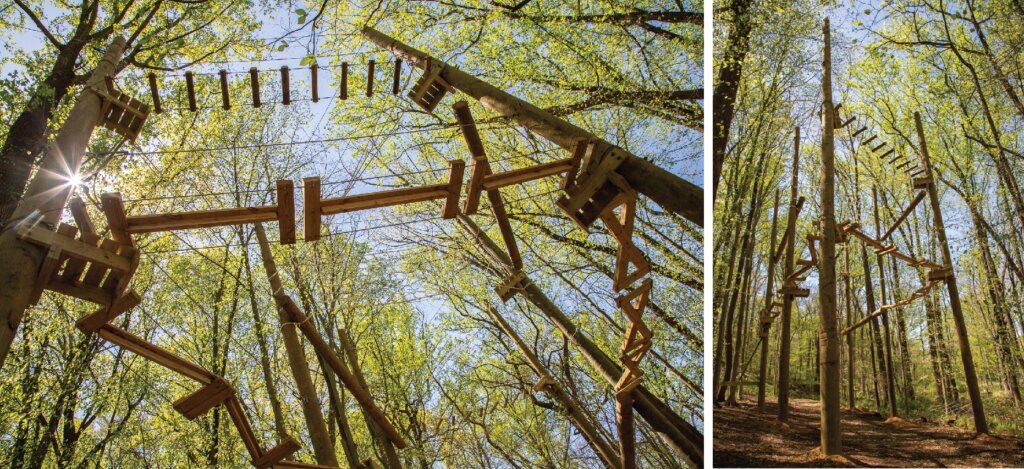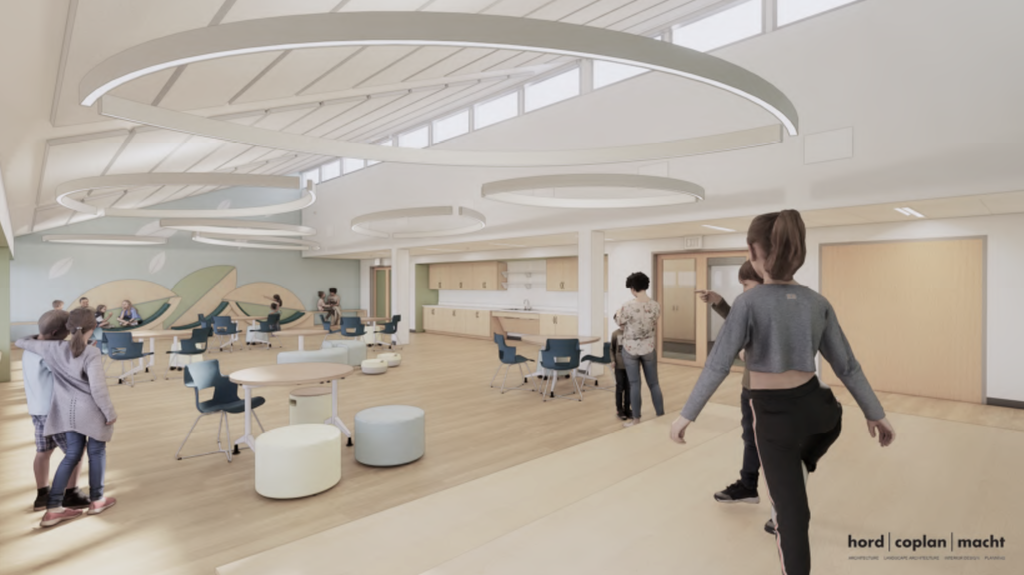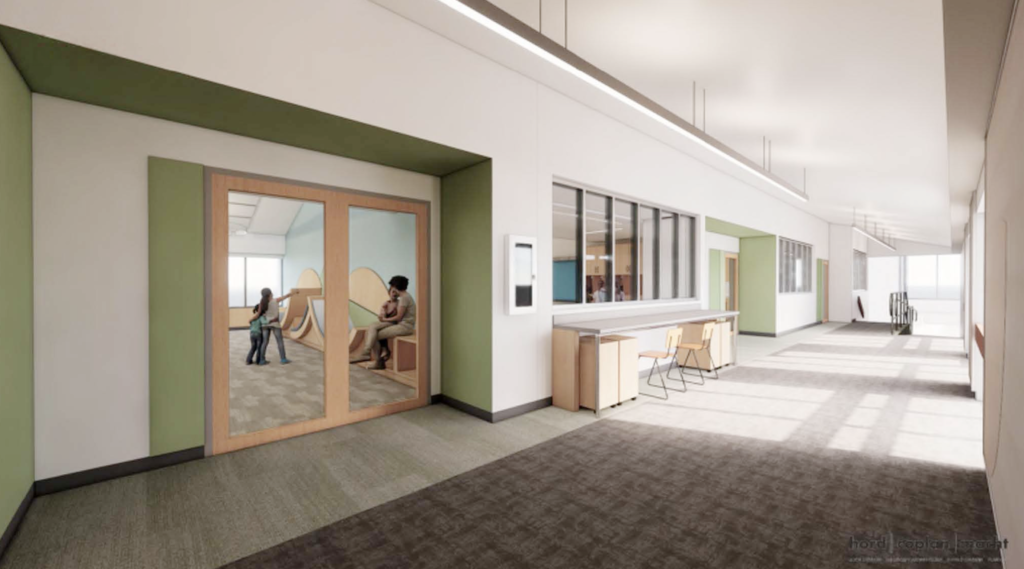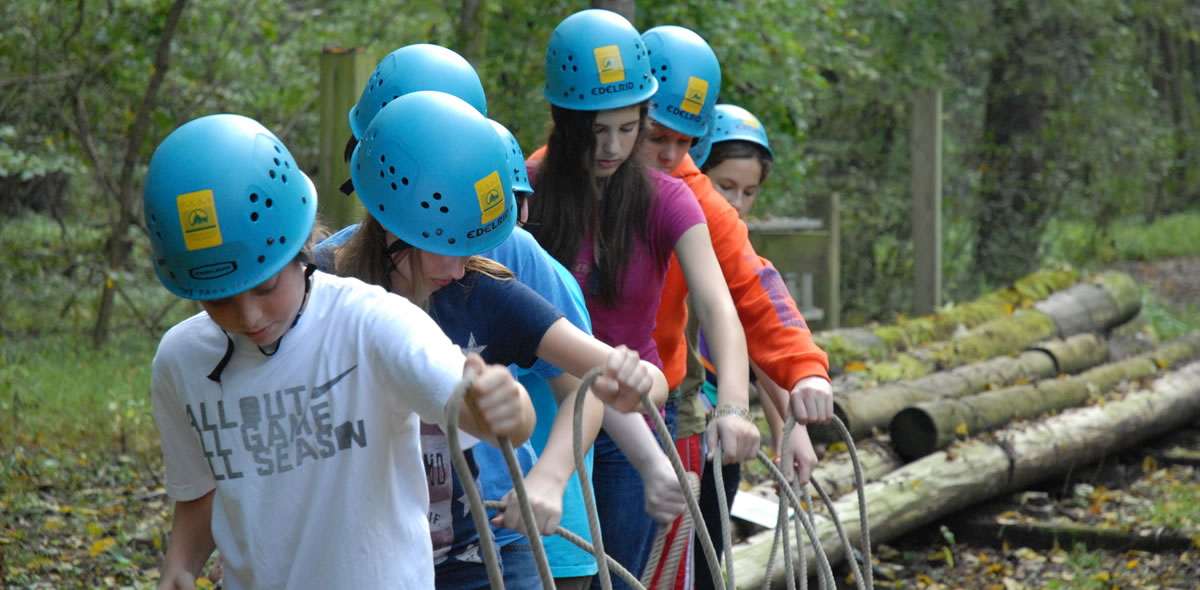Arts
In the Middle School arts curriculum, students create, imagine, and explore new ways of engaging with the world.
Through a range of experiences in drama, music, and visual art,students develop physical, aesthetic, and critical thinking skills that help them to see and respond to the world with empathy and discernment. We recognize that in Middle School students are self-reflective, and we cultivate artistic behaviors with which they can express their ideas. We value both process and presentation and provide opportunities for students to share their work with a wider audience.
All sixth and seventh graders take drama and visual art in a semester rotation. Ensemble based music classes meet twice a week throughout the year. In eighth grade, students choose from three trimester-long electives and spend one additional class period a week as part of a music or performing arts ensemble.
Drama — Sixth and Seventh Grades
The primary goal of the drama program in Middle School is to help students understand themselves and the world they live in, and to develop self-expression, self-discipline, and self-confidence through an active physical, emotional, and intellectual identification with a fictitious situation. An equally important aim is for students to understand the theater as a serious intellectual pursuit that requires rigorous work and attention and is, at its core, communal in nature. The most developmentally appropriate form of drama class for young adolescents is one that teaches through the aesthetic experience, not for it. To that end, all sixth and seventh grade classes are training rather than performance based.
Sixth Grade Drama
In this introductory course, students increase their confidence, discipline, and observational skills through group warm-ups in movement, mime, speech, and focus at the beginning of every class. Class improvisations and scene assignments provide opportunities for skill development in character, plot, and conflict resolution. Through the process of “learning how to rehearse” in their small scene work, students are encouraged to explore a variety of interpersonal relationships and real and imaginary environments and emotions. These scenes are then evaluated by other members of the class as a means of developing good critical analysis skills.
Seventh Grade Drama
Seventh grade drama builds on the skills acquired in the sixth grade course, with an added emphasis on character development through original student dramatic writing, professionally written scenes, and “scene starters.” Students are expected to take greater responsibility for all aspects of dramatic improvisation than in the sixth grade year, and every student is assigned a day in which to lead the class through a warm-up game of their choice. Group projects include a “Composition Assignment,” in which teams are given a list of props, sounds, actions, and texts to include in their devised scenes, and a four-week character development and original soliloquy project.
Visual Arts — Sixth and Seventh Grades
During the Middle School years, when identity formation is evolving, the visual arts provide an arena for imaginative exploration, risk-taking, and self-awareness. We nurture technical and conceptual understandings that allow students to better visually communicate emerging insights about themselves and their relationship to the world. The Middle School program balances skill development and intellectual challenge, while honoring the students’ points of view and interests.
Sixth Grade visual arts
In sixth grade art students explore both 2 and 3-dimensional work. Students engage in making personally meaningful artwork and practicing the following Art Studio Habits of Mind: develop craft, engage and persist, envision, express, observe, reflect, and stretch and explore. Students explore and develop their craft with a variety of sculptural materials and methods while exploring their own imaginative and self-expressive directions. Throughout the semester, students engage in projects including shoe design, wearable sculpture, and ceramics. In addition to learning concepts and skills for visual art making, students learn how to brainstorm, create ideas, make plans, make adjustments, and see a project through to the end. Towards the end of the semester, students envision their own final project, which can be completed in any medium.
Seventh Grade 2-Dimensional Studies
Seventh grade students deepen their understanding of 2 and 3-dimensional work and make meaningful artwork while practicing the following Art Studio Habits of Mind: develop craft, engage and persist, envision, express, observe, reflect, and stretch and explore. Students explore a variety of media areas including drawing, painting, printmaking, and collage. In addition, students work with found material, altered books, painting on nontraditional surfaces, and design work. Students gain skills in each medium while working both realistically and abstractly. An emphasis is placed on the role of drawing; students work both observationally and conceptually. During the term, students look at a variety of sources of inspiration that artists utilize and allow them to serve as points of departure for classwork. The role of personal interpretation and individual point of view in art is continuously emphasized during this seventh grade course of study. Towards the end of the semester, students envision their own final project, which can be completed in any medium.
Music — Sixth and Seventh Grades
The overall goals of the Middle School music program are to help students become more knowledgeable about the world of music and to become more skilled performers and listeners. Students are given opportunities to experience the challenge and joy of making music with others through our ensemble-based curriculum. Ensembles meet twice a week for 50 minutes. Playing music and singing together helps students build a repertoire, which in turn provides a context for specific musical concepts. Playing music from diverse genres, incorporating student interests, and providing opportunities to improvise and create are all priorities. Through their ensemble-based music classes, Middle Schoolers develop skill with their instruments and with music theory and notation. All groups have the opportunity to perform during the school year.
In addition, all Middle School students may elect to audition for the Advanced Ensembles (B#s, the Middle School a cappella group; Jazz Band; and Strings) that meet once a week before or after school.
Course descriptions for middle school performance Ensembles
Middle School Chorus (Middle Cs)
The Middle School non-auditioned chorus sings music from around the world, arrangements of show tunes and popular tunes, and composed art music. The choral curriculum includes study of music theory, sight singing, vocal technique, rehearsal and performance practice, and the international phonetic alphabet. The Middle School chorus has opportunities to perform at concerts and events throughout the year.
Concert Band
Concert Band is comprised of beginning to intermediate woodwind, brass, and percussion players with 1-4 years of experience playing their chosen instrument. The group develops instrumental ensemble skills through practice and performance of folk music, traditional band repertoire, jazz, and contemporary pieces. Concert Band performs at assemblies and seasonal concerts.
String Ensemble
String Ensemble explores a variety of classic and contemporary string orchestra and chamber music repertoire. Students expand their interpretive and technical skills, learn alternative styles, and develop ensemble skills through coaching and rehearsals. String Ensemble performs at assemblies and seasonal concerts. In order to participate in String Ensemble, students must have at least a year of experience on violin, viola, cello, or double bass.
Students who do not participate in Chorus, Band, or Strings are assigned to one of three other ensemble classes: Guitar/Ukulele, Keyboards, or Making Music.
Eighth Grade Arts — First Semester Elective Courses
Students take three trimester-long arts electives in eighth grade (fall, winter, and spring). Many arts electives are based on student interest and surveys. Past electives for the winter and spring have included Playwriting, Radio Drama, Clown, Choreography Lab, Performance Ensemble, Art and Nature, Paint Lab, Sketchbook, and Animation.
Dancing and Moving with the Lower School!
This course will focus on equipping eighth grade students to guide and teach dance and movement classes and experiences for students in the Lower School. Working in the dance studio and outdoors, we will explore a variety of movement, dance and dance/theater-based exercises and styles and consider how best to present, teach, and explore movement to groups of Kindergarten through fifth grade students. We will use class time to prepare and then host classes for Lower School students and their teachers, with the possibility of taking movement directly into their classrooms, too. This class is open to all and will offer opportunities for stress-management, lots of different kinds of movement, and fun and connection with Lower School students and teachers!
make it, paint it, light it: elements of theater production
- Section 1: Scenic Design and Painting (Scenic and Makeup)
- Section 1: Scenic Design and Construction (Set and Props)
This class introduces students to all aspects of theater production design (set, lights, props, sound, costumes, and make-up). Each section of the class will then focus on workshops in their related areas (painting or construction) and work together to design and build many of the visual elements for this year’s 8th Grade production. While the show isn’t until March, and auditions will occur in October, this is a great class to take if you are thinking of being involved in the show in any way! Please sign up for the section of the class that most matches your current curiosity. Come experience something new – no experience necessary!
modern music band
In this class we will be playing modern (pop/rock/R&B) music. We will learn arrangements of songs suggested by the class, and students will also have the opportunity to bring in original material to develop and workshop. We will also analyze the styles of different bands from the past and present to find out what elements make their songs work so well. Students will choose a main instrument to focus on, and will have the opportunity to try out new instruments. This class is open to anyone interested in developing their musical skills and knowledge: instruments include piano, guitar, bass, drums, vocals, sax, trumpet, trombone, clarinet, flute, violin, viola, and cello.
themed studio
In this visual arts class you will work as an artist in an open-studio-like setting to make art based on themes. A new theme will be introduced each week, and then throughout the week you will engage in thought and research, planning and making artwork, and finally sharing and reflecting. Themes that we will engage with may include: Dreams, Balance, Nature, Family, Love, Found Objects, Home, Abstraction, Relationships, Fantasy/Science Fiction, Illusions, Power, and Play. Some weeks, there will be suggested media and materials to explore, although most of the time, it will be up to you to decide if you want to paint, draw, sculpt, or create your artistic response in some other way. Your individual process as an artist will be central, and creative freedom is an important feature of this class. The process and material that you use for each week will be guided by the idea you have for the theme that week.
